Introduction to Business: Overview, Functions, and Analysis
VerifiedAdded on 2022/12/15
|22
|1356
|399
Report
AI Summary
This report provides a comprehensive introduction to the field of business, covering various aspects such as different types of organizations (public and private sectors), diverse business structures (functional, divisional, and matrix), and an overview of business operations using Tesco as an example. It delves into the importance of accounting, the functions of the HR department, and key features of employment legislation. The report also explores profit and loss accounts, team roles, stages of team development, motivation theories (Maslow's hierarchy), and leadership styles. Furthermore, it discusses customer service, customer profiling, and concludes with a summary of the key takeaways. The report references academic sources to support its analysis and findings. This document is contributed by a student to be published on the website Desklib. Desklib is a platform which provides all the necessary AI based study tools for students.
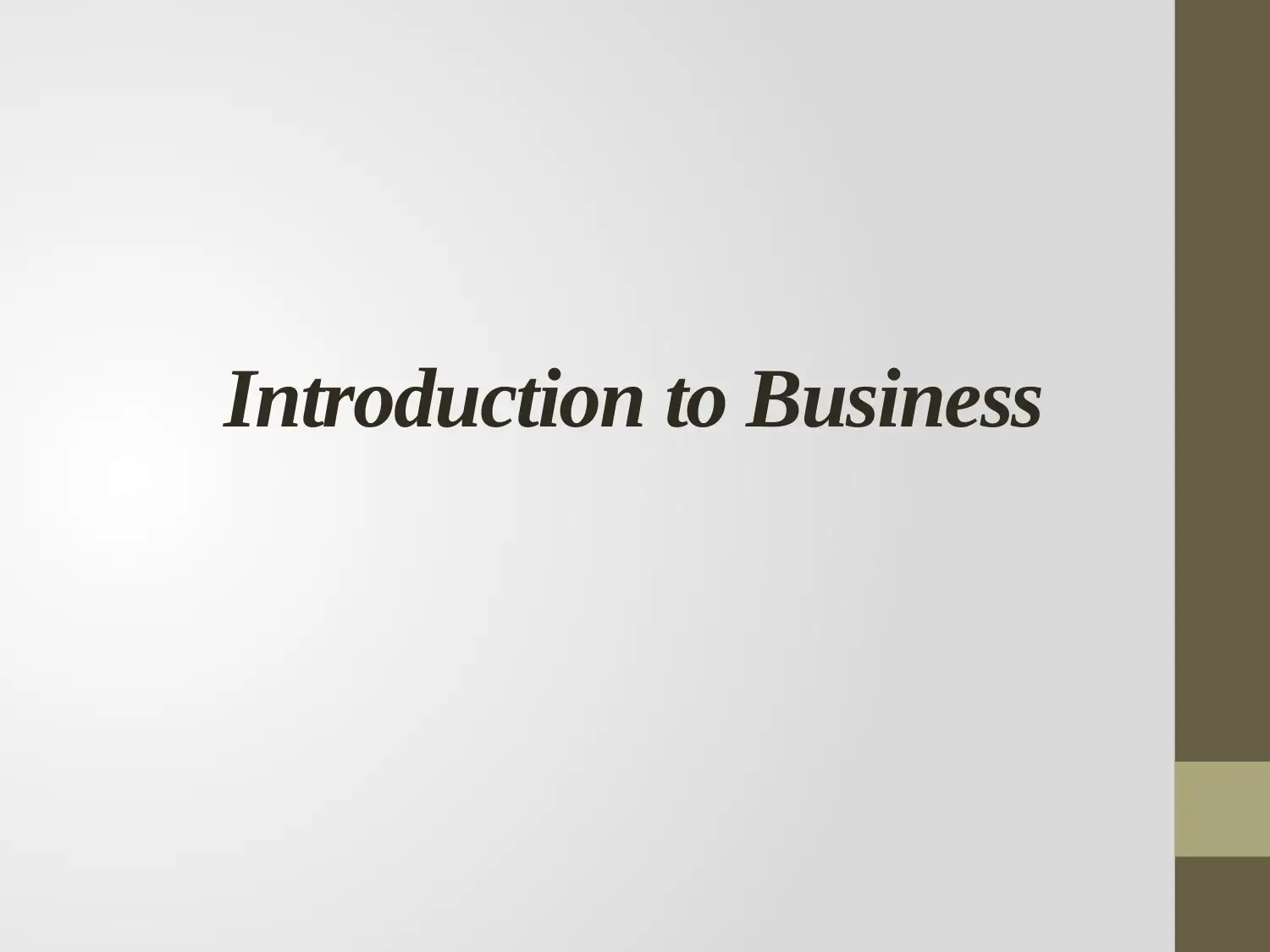
Introduction to Business
Paraphrase This Document
Need a fresh take? Get an instant paraphrase of this document with our AI Paraphraser
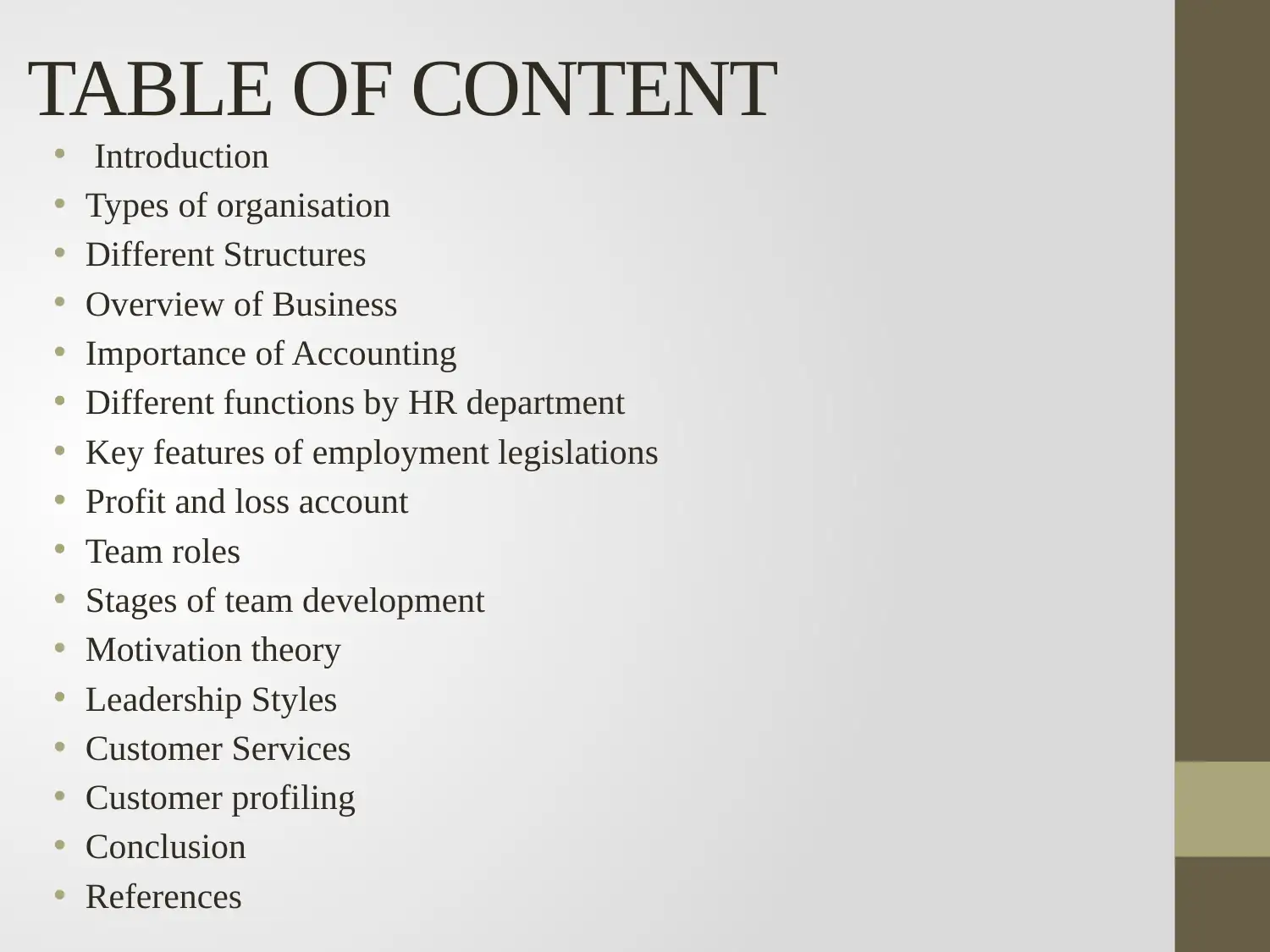
TABLE OF CONTENT
• Introduction
• Types of organisation
• Different Structures
• Overview of Business
• Importance of Accounting
• Different functions by HR department
• Key features of employment legislations
• Profit and loss account
• Team roles
• Stages of team development
• Motivation theory
• Leadership Styles
• Customer Services
• Customer profiling
• Conclusion
• References
• Introduction
• Types of organisation
• Different Structures
• Overview of Business
• Importance of Accounting
• Different functions by HR department
• Key features of employment legislations
• Profit and loss account
• Team roles
• Stages of team development
• Motivation theory
• Leadership Styles
• Customer Services
• Customer profiling
• Conclusion
• References
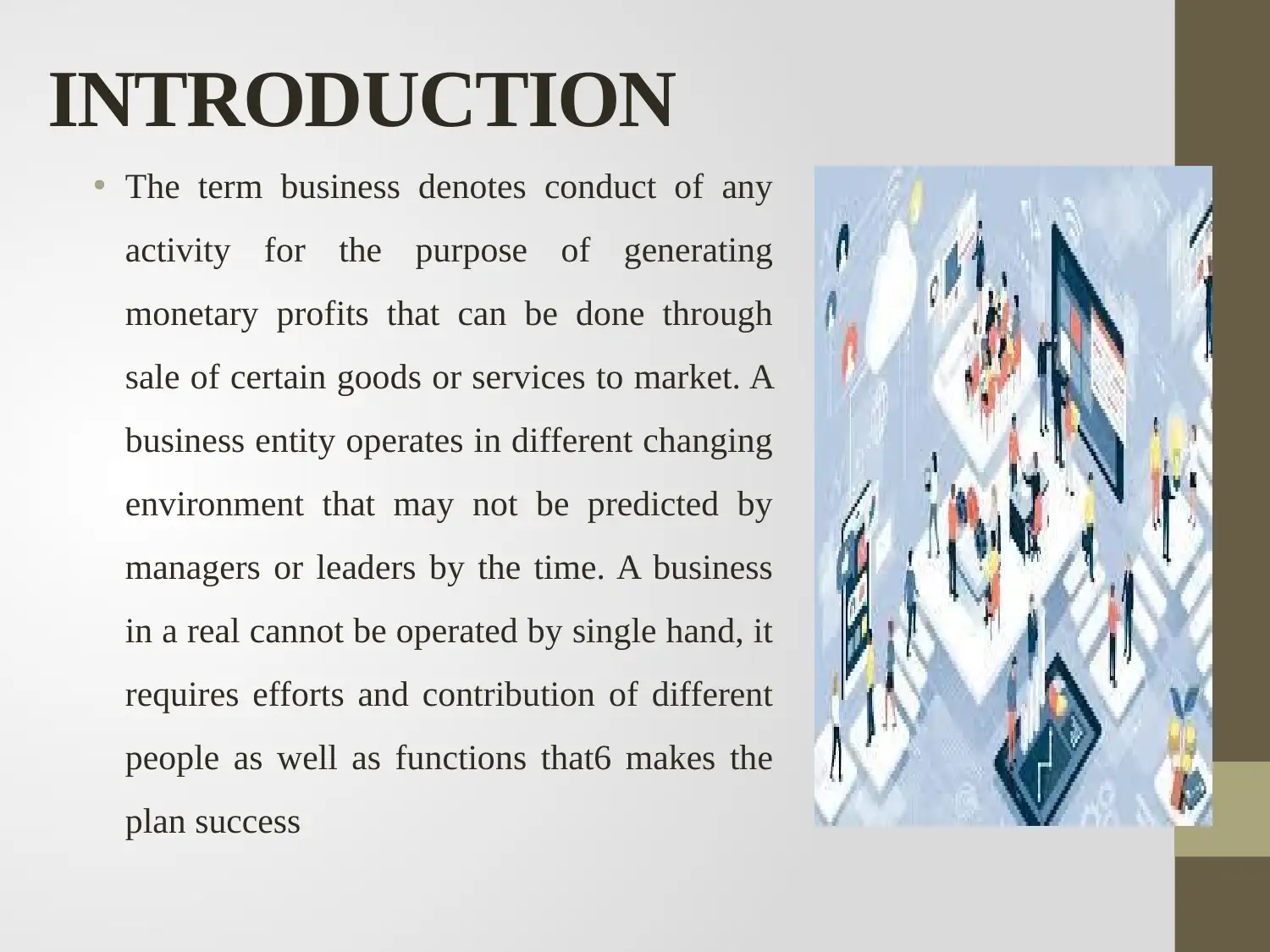
INTRODUCTION
• The term business denotes conduct of any
activity for the purpose of generating
monetary profits that can be done through
sale of certain goods or services to market. A
business entity operates in different changing
environment that may not be predicted by
managers or leaders by the time. A business
in a real cannot be operated by single hand, it
requires efforts and contribution of different
people as well as functions that6 makes the
plan success
• The term business denotes conduct of any
activity for the purpose of generating
monetary profits that can be done through
sale of certain goods or services to market. A
business entity operates in different changing
environment that may not be predicted by
managers or leaders by the time. A business
in a real cannot be operated by single hand, it
requires efforts and contribution of different
people as well as functions that6 makes the
plan success
⊘ This is a preview!⊘
Do you want full access?
Subscribe today to unlock all pages.

Trusted by 1+ million students worldwide
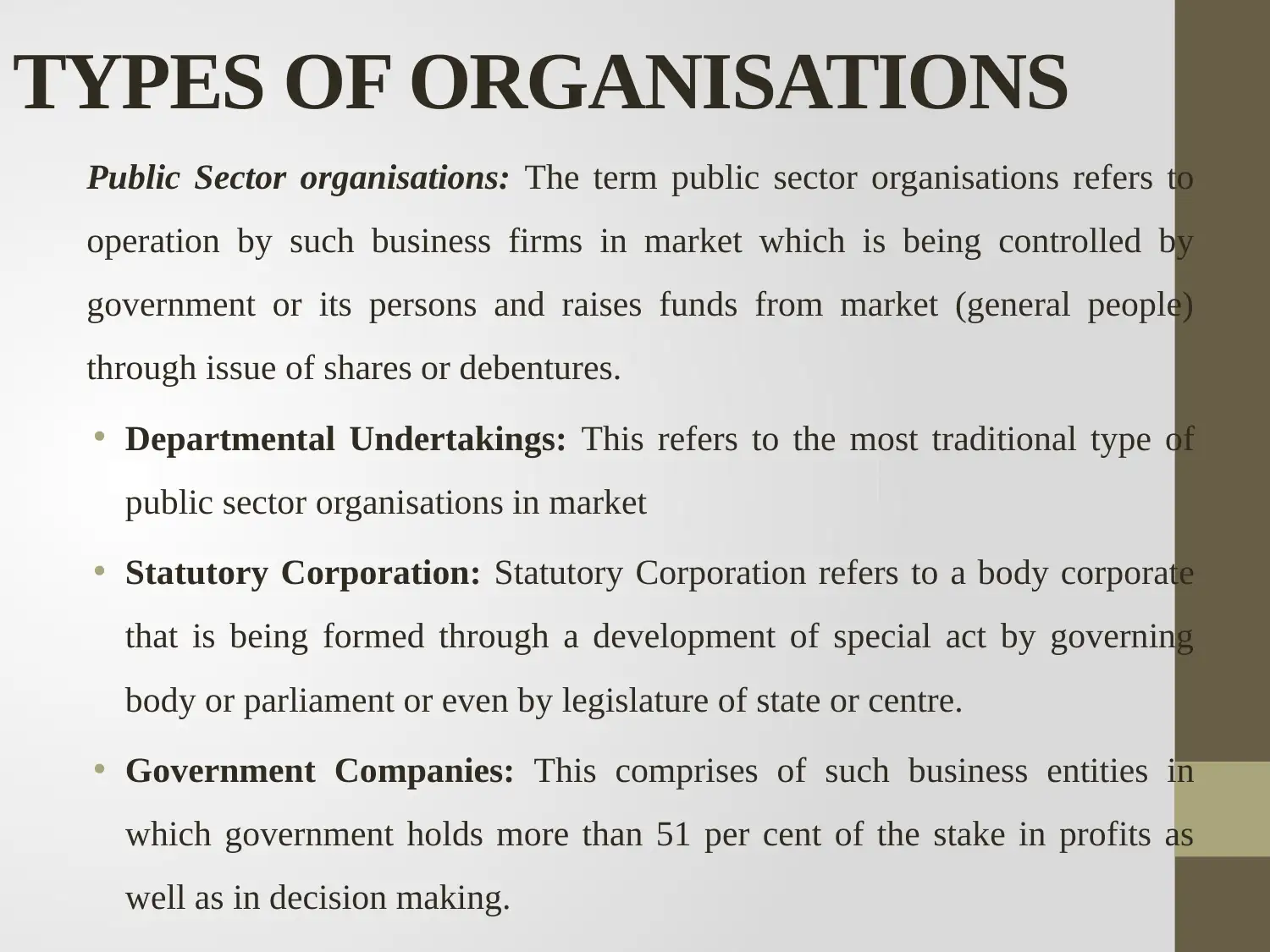
TYPES OF ORGANISATIONS
Public Sector organisations: The term public sector organisations refers to
operation by such business firms in market which is being controlled by
government or its persons and raises funds from market (general people)
through issue of shares or debentures.
• Departmental Undertakings: This refers to the most traditional type of
public sector organisations in market
• Statutory Corporation: Statutory Corporation refers to a body corporate
that is being formed through a development of special act by governing
body or parliament or even by legislature of state or centre.
• Government Companies: This comprises of such business entities in
which government holds more than 51 per cent of the stake in profits as
well as in decision making.
Public Sector organisations: The term public sector organisations refers to
operation by such business firms in market which is being controlled by
government or its persons and raises funds from market (general people)
through issue of shares or debentures.
• Departmental Undertakings: This refers to the most traditional type of
public sector organisations in market
• Statutory Corporation: Statutory Corporation refers to a body corporate
that is being formed through a development of special act by governing
body or parliament or even by legislature of state or centre.
• Government Companies: This comprises of such business entities in
which government holds more than 51 per cent of the stake in profits as
well as in decision making.
Paraphrase This Document
Need a fresh take? Get an instant paraphrase of this document with our AI Paraphraser
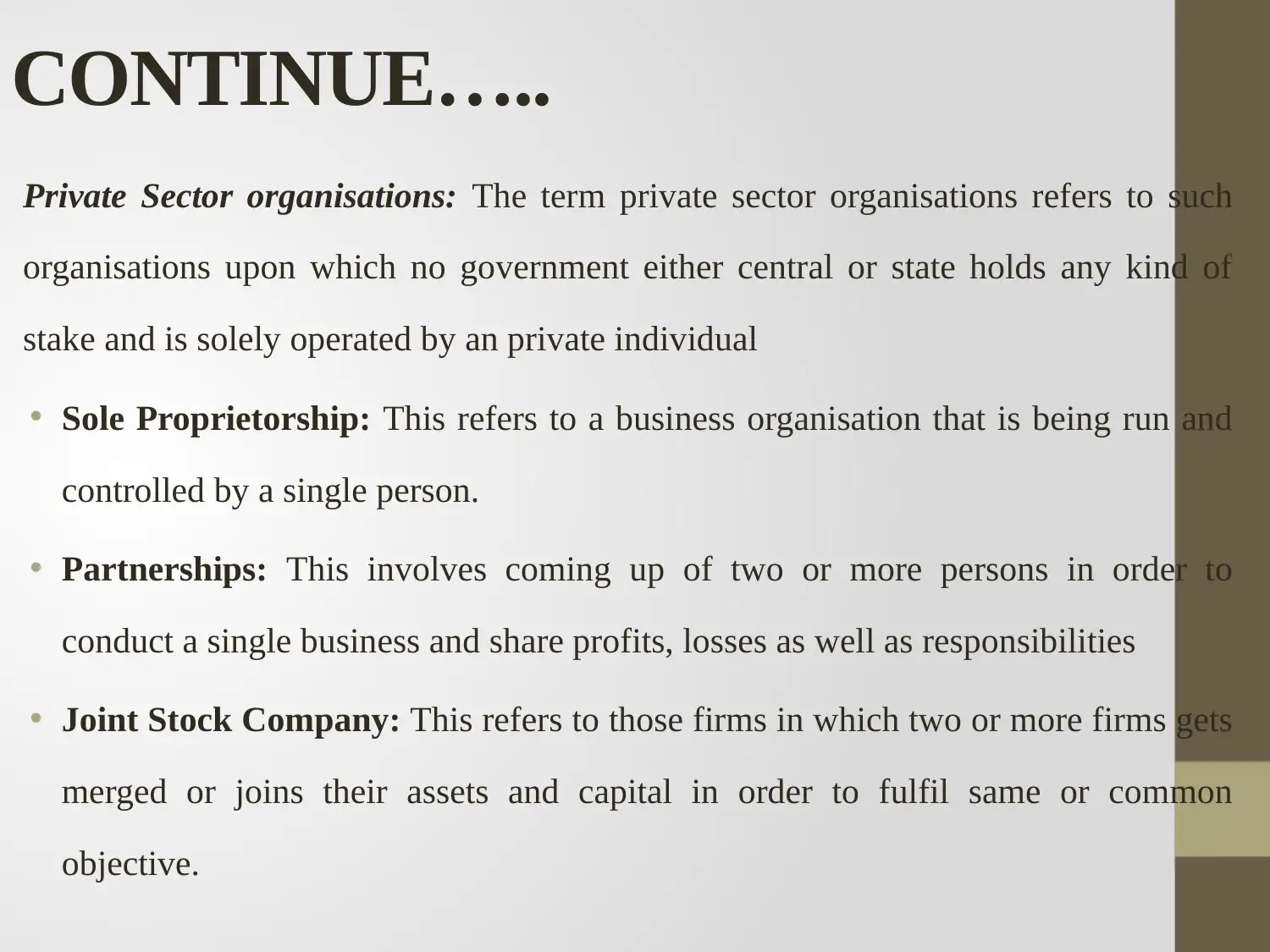
CONTINUE…..
Private Sector organisations: The term private sector organisations refers to such
organisations upon which no government either central or state holds any kind of
stake and is solely operated by an private individual
• Sole Proprietorship: This refers to a business organisation that is being run and
controlled by a single person.
• Partnerships: This involves coming up of two or more persons in order to
conduct a single business and share profits, losses as well as responsibilities
• Joint Stock Company: This refers to those firms in which two or more firms gets
merged or joins their assets and capital in order to fulfil same or common
objective.
Private Sector organisations: The term private sector organisations refers to such
organisations upon which no government either central or state holds any kind of
stake and is solely operated by an private individual
• Sole Proprietorship: This refers to a business organisation that is being run and
controlled by a single person.
• Partnerships: This involves coming up of two or more persons in order to
conduct a single business and share profits, losses as well as responsibilities
• Joint Stock Company: This refers to those firms in which two or more firms gets
merged or joins their assets and capital in order to fulfil same or common
objective.
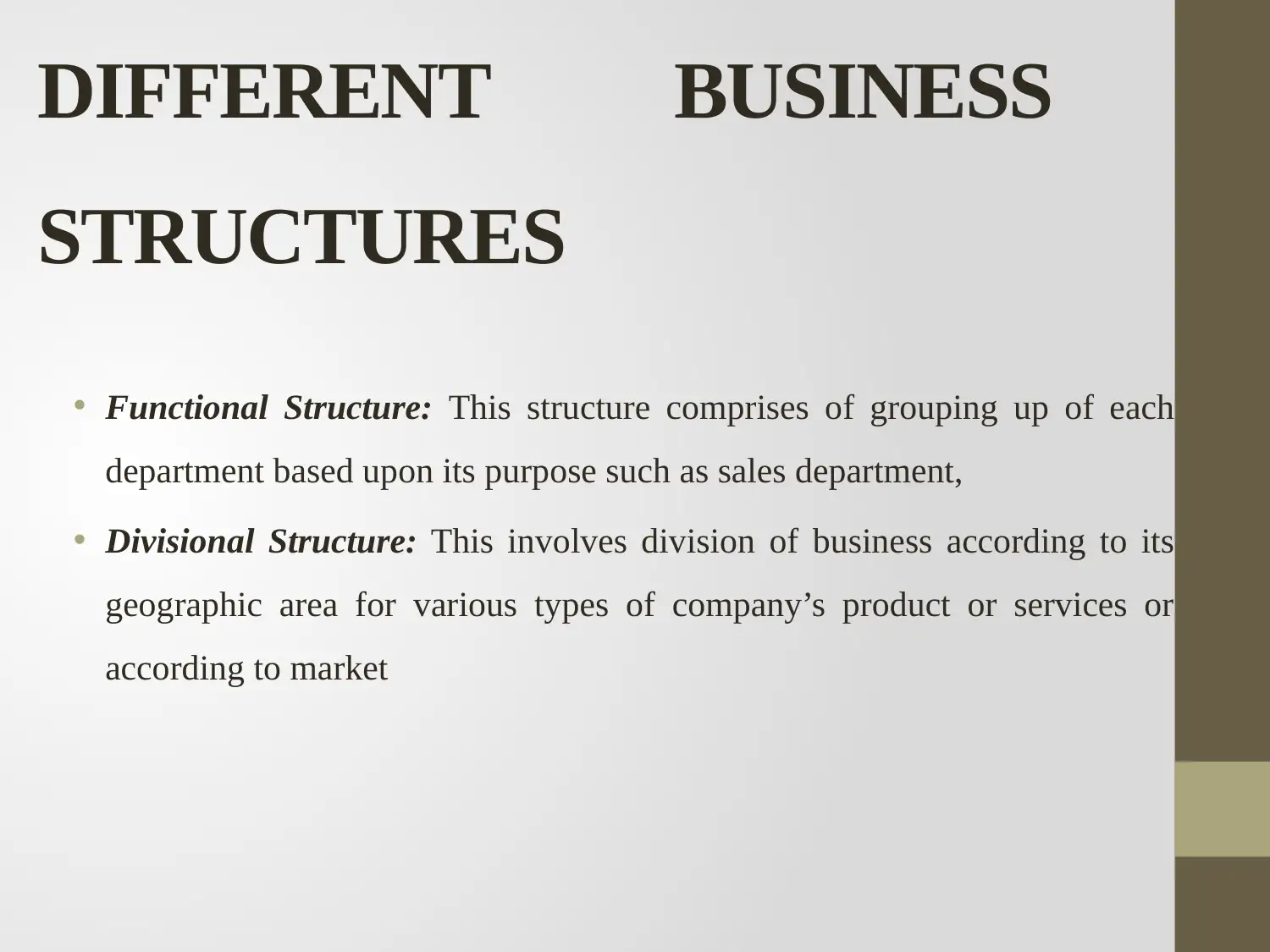
DIFFERENT BUSINESS
STRUCTURES
• Functional Structure: This structure comprises of grouping up of each
department based upon its purpose such as sales department,
• Divisional Structure: This involves division of business according to its
geographic area for various types of company’s product or services or
according to market
STRUCTURES
• Functional Structure: This structure comprises of grouping up of each
department based upon its purpose such as sales department,
• Divisional Structure: This involves division of business according to its
geographic area for various types of company’s product or services or
according to market
⊘ This is a preview!⊘
Do you want full access?
Subscribe today to unlock all pages.

Trusted by 1+ million students worldwide
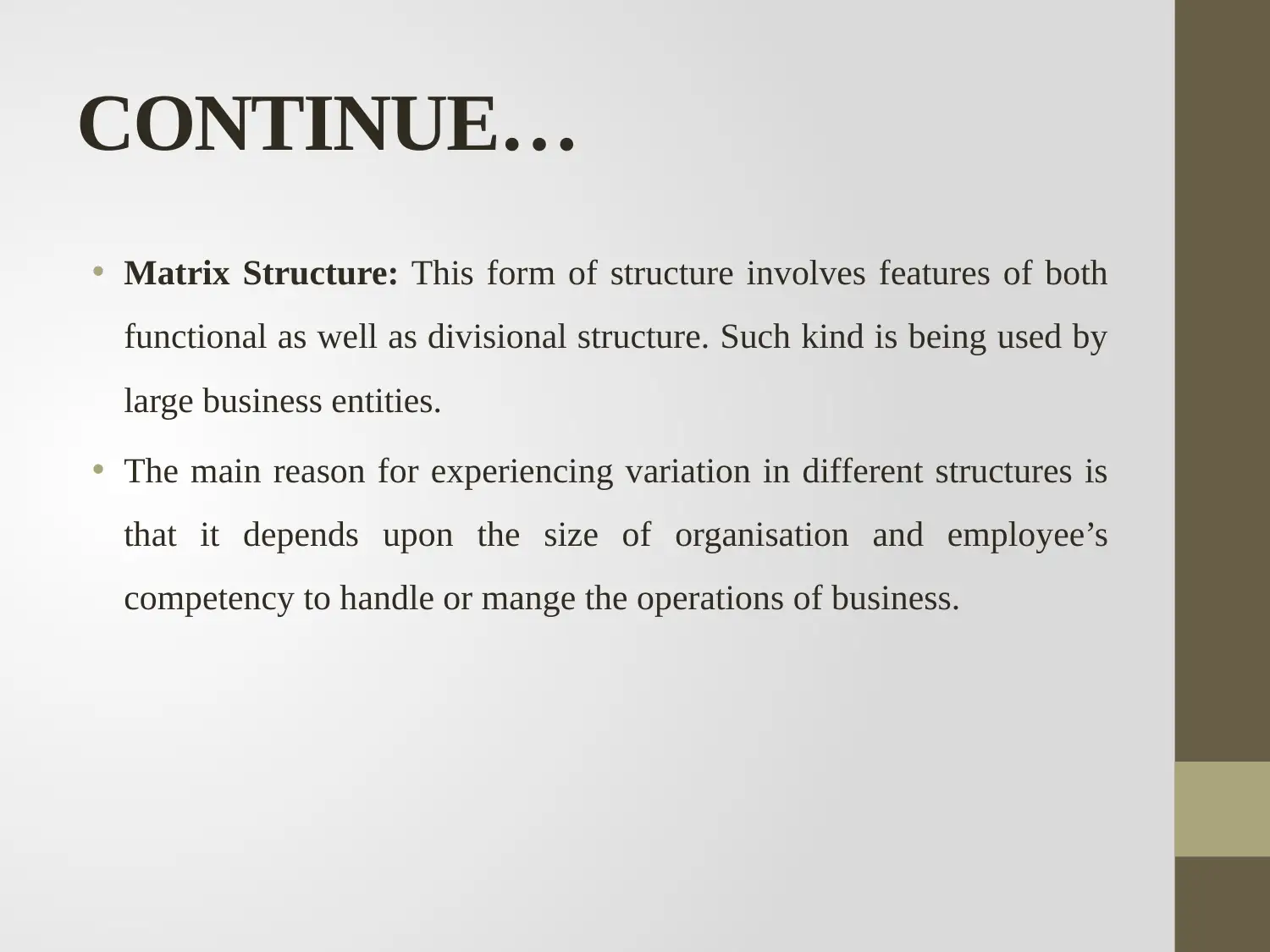
CONTINUE…
• Matrix Structure: This form of structure involves features of both
functional as well as divisional structure. Such kind is being used by
large business entities.
• The main reason for experiencing variation in different structures is
that it depends upon the size of organisation and employee’s
competency to handle or mange the operations of business.
• Matrix Structure: This form of structure involves features of both
functional as well as divisional structure. Such kind is being used by
large business entities.
• The main reason for experiencing variation in different structures is
that it depends upon the size of organisation and employee’s
competency to handle or mange the operations of business.
Paraphrase This Document
Need a fresh take? Get an instant paraphrase of this document with our AI Paraphraser

OVERVIEW OF BUSINESS
• The name business being identified here is TESCO which is a
multinational retail organisation that operates in more than 11
countries with 7005 physical stores across globe. The company has
it’s headquarter in England UK.
• The name business being identified here is TESCO which is a
multinational retail organisation that operates in more than 11
countries with 7005 physical stores across globe. The company has
it’s headquarter in England UK.

CONTINUE….
• Local economic impact: TESCO being a multinational operating
company provides opportunities to candidates in order to work with
them and acquires those candidates from local market of its
operations that boosts up the surroundings.
• National economic impact: TESCO has a positive impact towards
national development and prosperity.
• Global economic impact: TESCO is a global operating company and
serves its products or services in more than 11 countries which helps
global economy in trade and maintaining healthy relations with other
countries
• Local economic impact: TESCO being a multinational operating
company provides opportunities to candidates in order to work with
them and acquires those candidates from local market of its
operations that boosts up the surroundings.
• National economic impact: TESCO has a positive impact towards
national development and prosperity.
• Global economic impact: TESCO is a global operating company and
serves its products or services in more than 11 countries which helps
global economy in trade and maintaining healthy relations with other
countries
⊘ This is a preview!⊘
Do you want full access?
Subscribe today to unlock all pages.

Trusted by 1+ million students worldwide
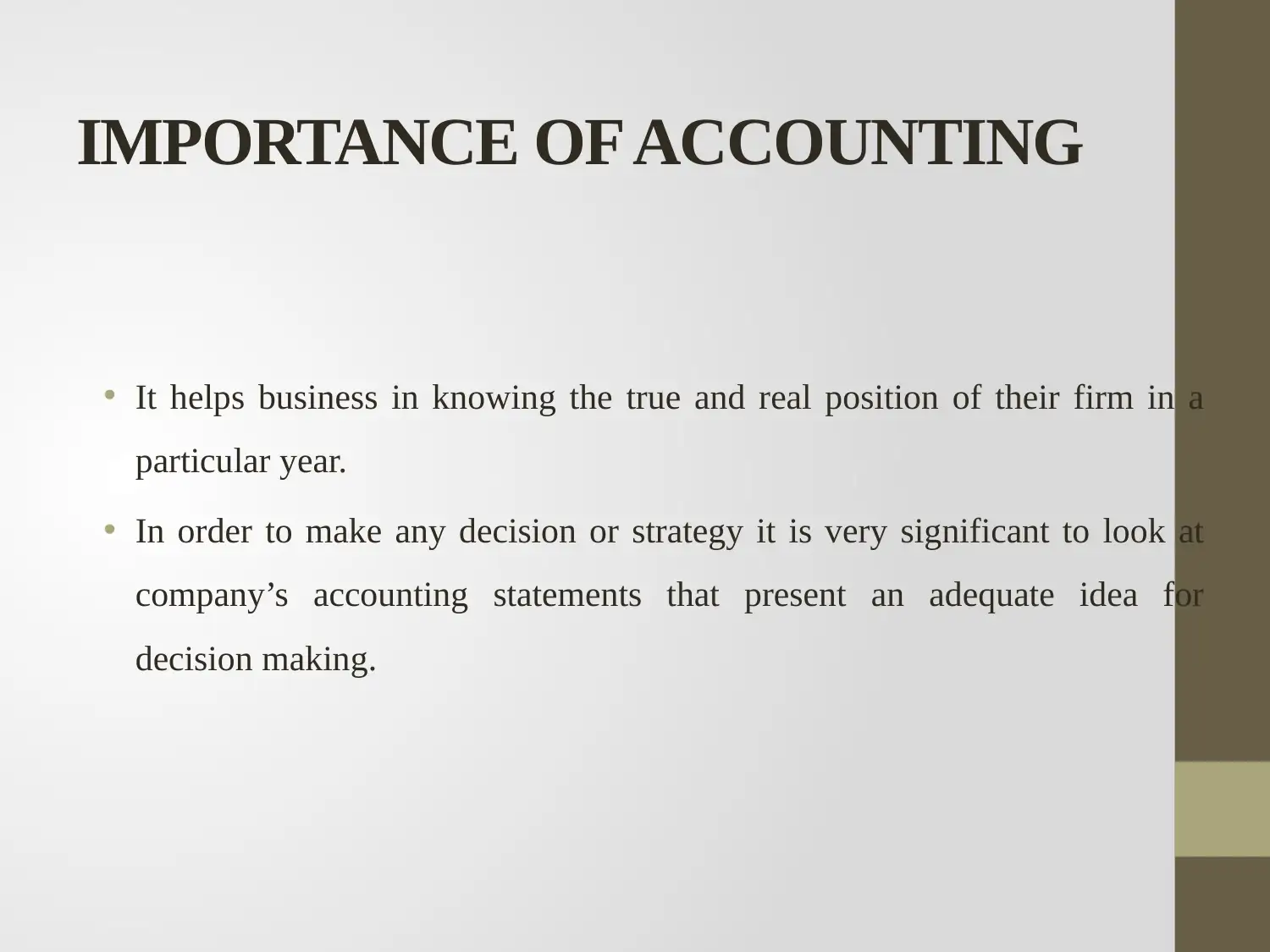
IMPORTANCE OF ACCOUNTING
• It helps business in knowing the true and real position of their firm in a
particular year.
• In order to make any decision or strategy it is very significant to look at
company’s accounting statements that present an adequate idea for
decision making.
• It helps business in knowing the true and real position of their firm in a
particular year.
• In order to make any decision or strategy it is very significant to look at
company’s accounting statements that present an adequate idea for
decision making.
Paraphrase This Document
Need a fresh take? Get an instant paraphrase of this document with our AI Paraphraser
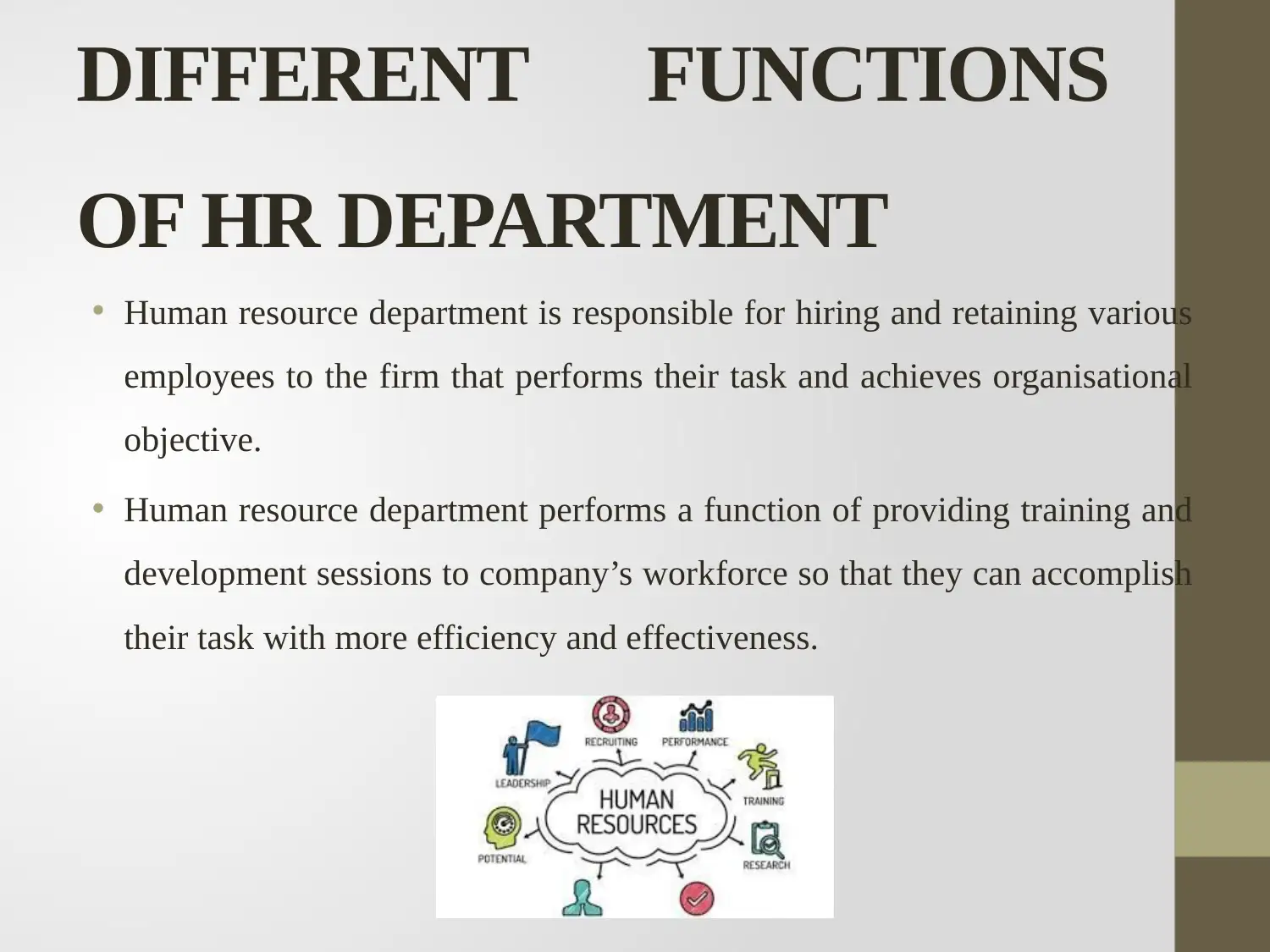
DIFFERENT FUNCTIONS
OF HR DEPARTMENT
• Human resource department is responsible for hiring and retaining various
employees to the firm that performs their task and achieves organisational
objective.
• Human resource department performs a function of providing training and
development sessions to company’s workforce so that they can accomplish
their task with more efficiency and effectiveness.
OF HR DEPARTMENT
• Human resource department is responsible for hiring and retaining various
employees to the firm that performs their task and achieves organisational
objective.
• Human resource department performs a function of providing training and
development sessions to company’s workforce so that they can accomplish
their task with more efficiency and effectiveness.
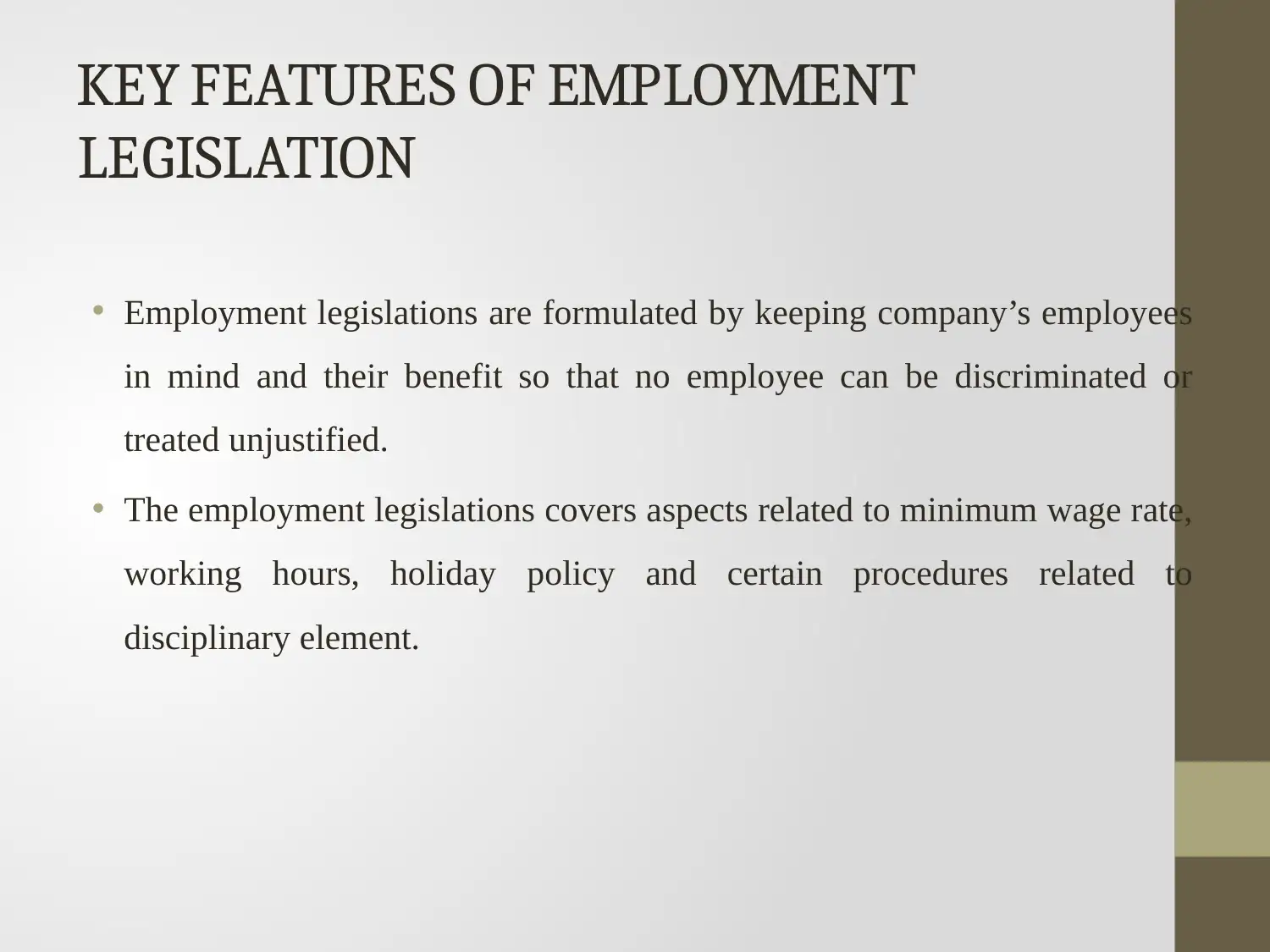
KEY FEATURES OF EMPLOYMENT
LEGISLATION
• Employment legislations are formulated by keeping company’s employees
in mind and their benefit so that no employee can be discriminated or
treated unjustified.
• The employment legislations covers aspects related to minimum wage rate,
working hours, holiday policy and certain procedures related to
disciplinary element.
LEGISLATION
• Employment legislations are formulated by keeping company’s employees
in mind and their benefit so that no employee can be discriminated or
treated unjustified.
• The employment legislations covers aspects related to minimum wage rate,
working hours, holiday policy and certain procedures related to
disciplinary element.
⊘ This is a preview!⊘
Do you want full access?
Subscribe today to unlock all pages.

Trusted by 1+ million students worldwide
1 out of 22
Related Documents
Your All-in-One AI-Powered Toolkit for Academic Success.
+13062052269
info@desklib.com
Available 24*7 on WhatsApp / Email
![[object Object]](/_next/static/media/star-bottom.7253800d.svg)
Unlock your academic potential
Copyright © 2020–2025 A2Z Services. All Rights Reserved. Developed and managed by ZUCOL.



